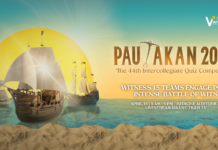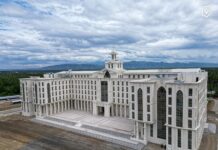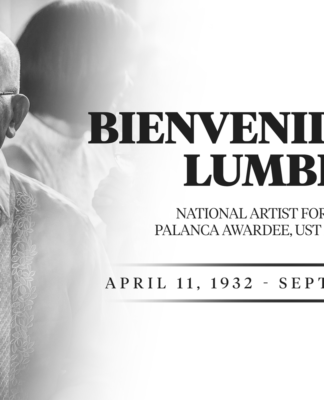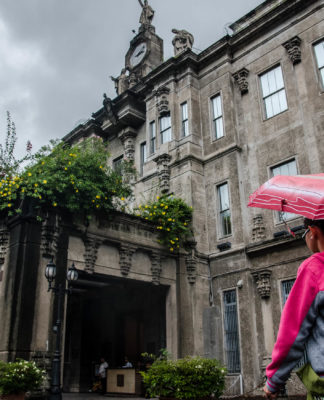THE THUNDER of La Naval is expected to ring loudest next month when the Philippine Church and the Dominican Order mark the centennial of the coronation of the Nuestra Señora del Rosario, La Naval de Manila.
Now enshrined at the Santo Domingo Church in Quezon City, Nuestra Señora del Rosario de La Naval was the first Marian image in the Philippines to be canonically crowned in 1907. It is said that Pope Pius X had immediately acceded to the Dominicans’ request for the canonical coronation by writing his permission long-hand in 1906.
The festivities of La Naval were the most lavish and most-attended in Old Manila. They commemorated the miraculous victory of the outnumbered Spanish and Filipino defenders against the Protestant Dutch invaders in 1646.
To mark this centennial of the canonical coronation of La Naval de Manila, the Santissimo Rosario Parish in UST launched the “Regina Sacratissimi Rosarii Exhibit,” an exhibit featuring unique rosary beads and different images of Our Lady of the Holy Rosary, which opened last Sept. 8. The exhibit was the parish church’s contribution to the month-long celebration of the centennial of the coronation organized by the Dominican Province of the Philippines.
According to parish priest Fr. James Allamillo, O.P., for the UST parish to be part of the national centennial celebration is an honor.
“After being the image’s sanctuary for 13 years, the Santissimo Rosario parish considers La Naval part of its history,” Alamillo told the Varsitarian, in reference to the war and immediate post-war years when La Naval was housed in UST after the old Sto. Domingo Church in Intramuros was bombed during the Japanese invasion. “La Naval has significantly paved the way for larger Marian festivities in our parish, which all became traditions eventually.”
Prelude to festivity
Aside from a special section of the exhibit dedicated to La Naval de Manila, various artifacts and memorabilia the Virgin Mary and the Holy Rosary.
The enlarged photographs show the grand procession that accompanied the transfer of La Naval in a boat-shaped carriage from the UST Santissimo Parish Church to the Sto. Domingo Church in Quezon City in 1954. Also on display are La Naval medals dating back to 1946 and embellished garments previously worn by the miraculous image.
A rosary collection from Rei Nicolas, a curator of Museo de Sto. Domingo and an avid Marian item collector, was also displayed. Particularly striking were the rosaries with beads made from silver, gems, and other intricate materials.
A unique depiction of the Nuestra Señora del Rosario presents photos of her face and hands in a stitched background of abaca fiber, holding a rosary with her left hand and the infant Christ in the other.
The poster of the Virgen del Rosario de Orani, the Our Lady of the Rosary of Orani, Bataan, is also presented in the exhibit. The portrayal shows Our Lady of the Rosary being crowned by two angels while illustrations of the Annunciation and the Agony of Jesus in the Garden spread on its background.
The statues of St. Dominic and St. Pius V, two key figures who greatly influenced the spread of the rosary devotion, are also on the display.
“Marian devotion is very strong in the Philippines as shown by how much we value festivities and articles related to Mary like the rosary,” Nicolas told the Varsitarian.
Aside from Nicolas, who also curated the exhibit, Tom Joven, Jerome de Jesus, Noel Abquilan, Gino Marasigan, Manny Castro, Dr. Jojo Valencia, Jun Manaban, and other Marian devotees from Quezon City and Pampanga have lent an array of articles to the exhibit.
Meanwhile, Bro. Jessie Yap, O.P., James Patrick Jaring, and Peter Paul Nicolas form the research committee.
Convent prior Fr. Rodel Aligan, O.P., with Sampaloc Manila Rep. Ma. Theresa Bonoan-David, opened the exhibit on Sept. 8, the feast of the nativity of the Blessed Virgin Mary.
The exhibit runs until Oct. 4.
Thomasian gifts
Throughout the University this September, most buildings have installed a Marian display, which according to UST Pax Romana vice-president for Christian renewal Louis Marvil Abala is their way of greeting the Blessed Virgin a happy birthday.
“Aside from wanting to celebrate the birth of Our Lady, the local Pax Romana units, aimed to make the displays a catechism,” Abala told the Varsitarian. “These images show Mary’s varied roles.”
Nuestra Señora de Peñafrancia, often called as “Ina” by Bicolanos, Nuestra Señora de la Paz y Buen Viaje, the miraculous image presently found in Antipolo, Nuestra Señora de Caysasay, the patroness of the Batangueños, are some of the featured images of Our Lady in the exhibits. .
“It is notable that the local units of Pax Romana became active again in this kind of activities. The autonomy we gave them created more means of effective communication and cooperation among the units,” Abala said. Levine Andro H. Lao


















